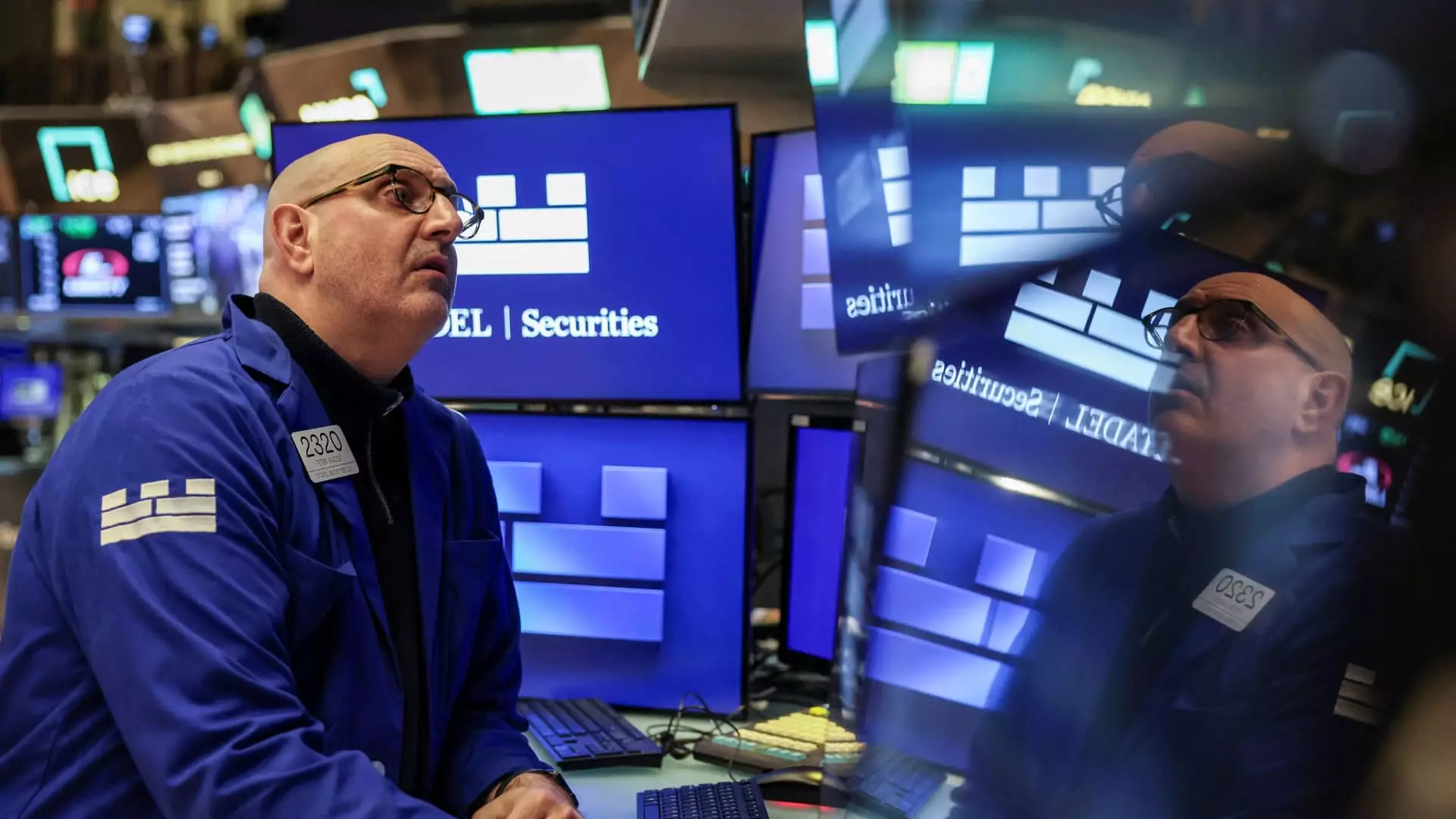As we approach April 2, the tension on Wall Street is palpable. Investors are ruggedly searching for clarity regarding U.S. tariffs, all while grappling with the troubling undercurrents of market volatility. The optimism surrounding President Donald Trump’s tariff policies appears waning. Amidst the dizzying drops—an S&P 500 slump of over 8% from its all-time high and a staggering 13% plummet for the Nasdaq—it raises an essential question: Is a coherent plan on tariffs feasible, or are we simply entrenching ourselves in a quagmire of economic uncertainty?
In the face of such onslaught, a glimmer of hope remains. Trump’s forthcoming announcement from the Rose Garden is expected to shine a light on the intricacies of reciprocal tariffs. But it remains questionable whether a mere outline will suffice. There is a critical need for specificity. Gabriela Santos, a prominent strategist at J.P. Morgan, emphasizes that only a well-structured framework detailing specific tariffs applied to targeted nations over defined time periods can meaningfully calm market nerves. A casual inkling about future tariffs, devoid of thorough specifics, will likely exacerbate investor anxiety rather than alleviate it.
Historical Trends and the April Resurgence Myth
On the surface, there are positive historical precedents that could suggest an upcoming market correction, particularly in April. Historically, the S&P 500 tends to rally under similar circumstances—averaging a 2.5% climb when beginning the month under its 200-day moving average, while achieving a positive return 73% of the time since 1950. However, these statistics should not be mistaken as guarantees. The uniqueness of this moment, marked by unprecedented tariff uncertainties, complicates even the most traditional trajectories of market behavior.
Despite this historical backdrop, the worst-case scenario looms uncomfortably close. The words “maximalist” and “tariff” generate a dizzying combination that reorients the economic landscape. According to Brett Ryan, an economist at Deutsche Bank, the potential for a blanket tariff approach on all nations with existing trade deficits could escalate the average tariff rate alarmingly high—from a current projection of 10.5% to over 16%. This not only raises immediate red flags for inflation and economic growth, but also invites the ghost of stagflation—an ominous specter that haunts any economy.
The Disheartening Economic Landscape
Current economic forecasts are hardly optimistic. The proclivity for trade wars creates a trickle-down effect that leaves investors biting their nails, waiting for observable signs of growth amid uncertainty. Recent downgrading of projections from prominent analysts, like David Kostin from Goldman Sachs, further fuels fears that we’re on an unsustainable trajectory. A recent cut in their year-end target for the S&P 500—falling from 6,200 to 5,700—signals palpable disappointment in the potential market recovery.
The fundamental notion that the economy is not merely a reactive entity but one that builds on interdependencies is critical. Economists like Christopher Harvey at Wells Fargo remind us of the volatility tied to the “liberation day” touted by the White House. The risks surrounding such a pivotal moment are not negligible and could very well catalyze a recession. Firms and governments traditionally move at a glacial pace, creating a situation where any retaliatory action or negotiation can extend over weeks or even months.
The Uncertainty: A Long and Winding Road Ahead
Unfortunately, uncertainty is the only certainty in this economically unstable milieu. Investors must now recalibrate their portfolios and mental frameworks to accept that this phase of unpredictability is likely to continue. It’s not merely about who blinks first in a tariff standoff; it’s about broader implications that affect our economic health. Whether we’re ready or not, our economic state hinges on countless variables that are too intricate to control.
As we experience this tempest of fiscal tumult, the burgeoning tariffs could redefine the American economic landscape in troubling ways. Now more than ever, it’s crucial for investors to come to terms with the enormity of this situation. We face a long and arduous journey toward clarity, one fraught with potential economic ramifications that could affect us all. The visibility on the horizon appears dim, and we must remained acutely aware that, in the chess match of international trade, every move counts.

